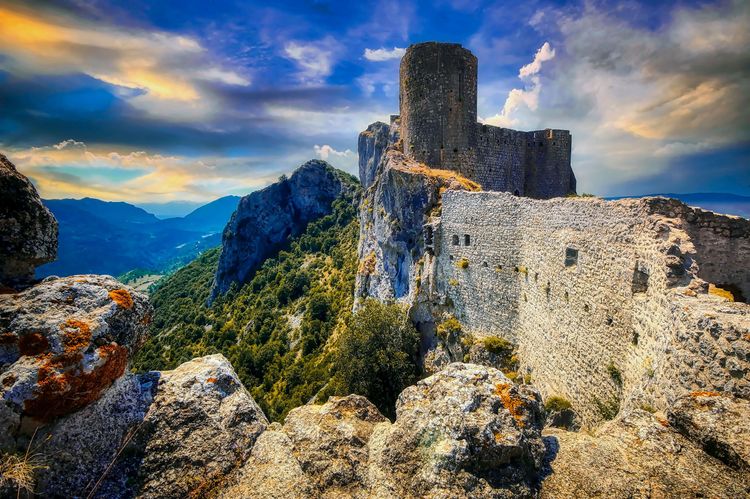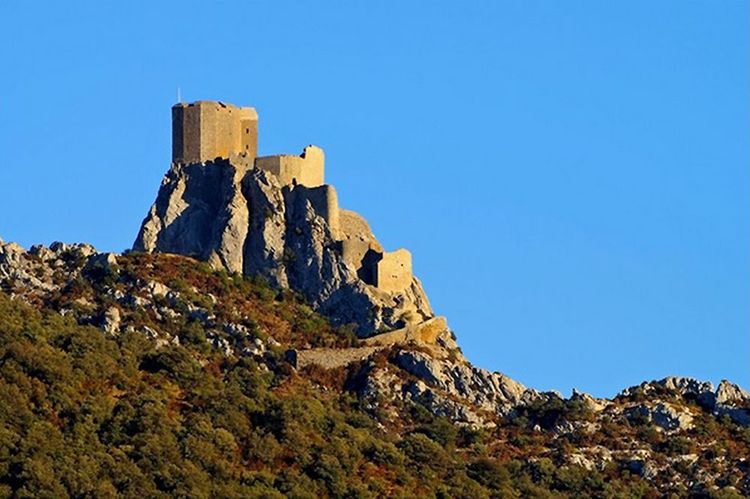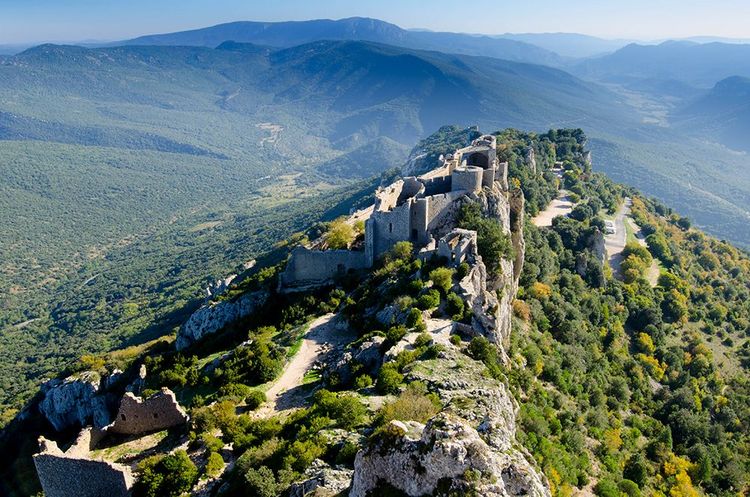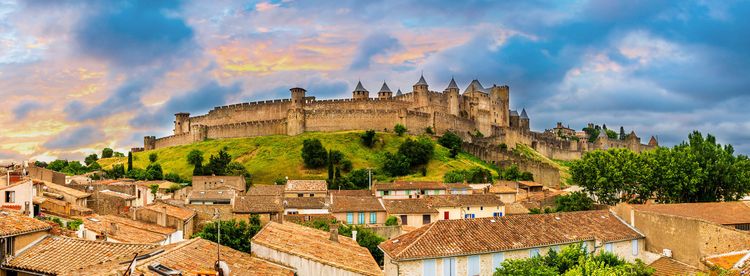So it is, for example, with the castle of Quéribus, built in Cucugnan in the 10th century, where it stands upright on a rocky spur. But what does this have to do with the Cathars of the 13th century, you might ask? The answer is simple: the castles known today as Cathar castles have little to do with the Cathars, who were one-offs in history, whereas they lived through the ages.
It's a myth created by the confusion of romantic writers of the 19th century with a very approximate approach to history, who believed that it was the crusade against the Albigensians, in other words against the Cathars, that had caused the collapse of all these castles. In reality, the state of ruin of these castles has little to do with the Cathars.
These castles, built around the year 1000, often on castra dating from antiquity, survived the Cathars. Military necessity turned them into feudal fortresses until their use dried up with the Treaty of the Pyrenees in 1659, which pushed back the border with Spain. This signalled their demise. In fact, the term "Cathar castle" only appeared in historical literature in the last century. And with it the Cathar country.










